-
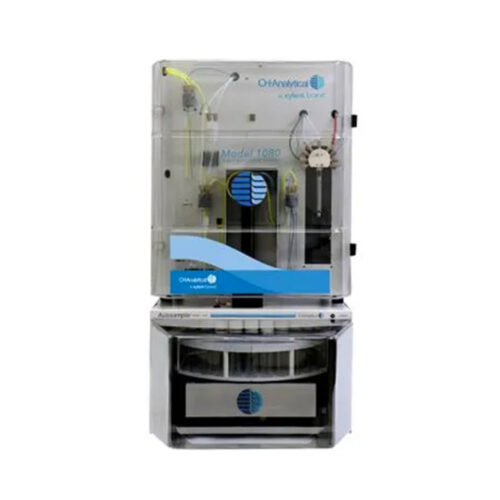 Total organic carbon (TOC) measurement is a well-established technique that provides valuable information about water quality for process control and regulatory compliance. Though high-temperature combustion TOC has been shown to be very effective for the analysis of samples that are of high molecular weight or contain substantial amounts of salt or difficult-to oxidize organics (e.g, humic acid), these types of samples are problematic for combustion TOC analyzers.
Total organic carbon (TOC) measurement is a well-established technique that provides valuable information about water quality for process control and regulatory compliance. Though high-temperature combustion TOC has been shown to be very effective for the analysis of samples that are of high molecular weight or contain substantial amounts of salt or difficult-to oxidize organics (e.g, humic acid), these types of samples are problematic for combustion TOC analyzers. -
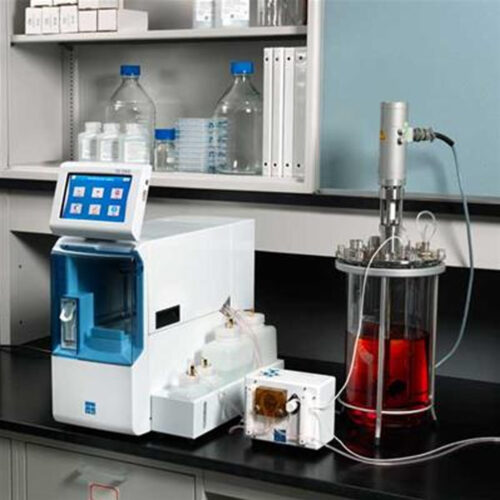
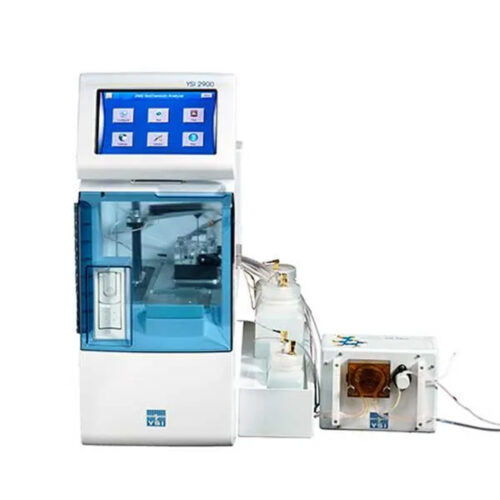 The YSI 2900M Online Monitoring & Control System featuring the YSI 2960 Online Sampler is a key and reliable partner for the monitoring and optimization of your bioprocess. The YSI 2960 Online Sampler automatically draws fluids from your bioreactor and delivers samples directly to the YSI 2900 Biochemistry Analyzer for testing. Sampling is done aseptically as lines are flushed and antiseptic is kept in them after each draw. The system supports connection with RS232, Ethernet, and OPC. The YSI 2900M Online Monitoring & Control System provides a simple and reliable solution for running your bioprocess automatically with little risk of contamination.
The YSI 2900M Online Monitoring & Control System featuring the YSI 2960 Online Sampler is a key and reliable partner for the monitoring and optimization of your bioprocess. The YSI 2960 Online Sampler automatically draws fluids from your bioreactor and delivers samples directly to the YSI 2900 Biochemistry Analyzer for testing. Sampling is done aseptically as lines are flushed and antiseptic is kept in them after each draw. The system supports connection with RS232, Ethernet, and OPC. The YSI 2900M Online Monitoring & Control System provides a simple and reliable solution for running your bioprocess automatically with little risk of contamination. -
 Equip your lab with the accurate, easy to use Thermo Scientific™ Orion™ AquaMate 8000 UV-Vis Spectrophotometer to ensure you have the ideal instrument for water analysis and beyond. This spectrophotometer offers 260 preprogrammed methods for ion concentration from absorbance plus wavelength scanning function and standard curve function for creating custom method using so virtually any brand of colorimetric reagent can be used. Utilize 190-1100 nm selectable wavelengths, 1.8 nm spectral bandwidth and vial flexibility with the included 3-position carousel for holding round and rectangular vials. Other more simple models available!
Equip your lab with the accurate, easy to use Thermo Scientific™ Orion™ AquaMate 8000 UV-Vis Spectrophotometer to ensure you have the ideal instrument for water analysis and beyond. This spectrophotometer offers 260 preprogrammed methods for ion concentration from absorbance plus wavelength scanning function and standard curve function for creating custom method using so virtually any brand of colorimetric reagent can be used. Utilize 190-1100 nm selectable wavelengths, 1.8 nm spectral bandwidth and vial flexibility with the included 3-position carousel for holding round and rectangular vials. Other more simple models available! -
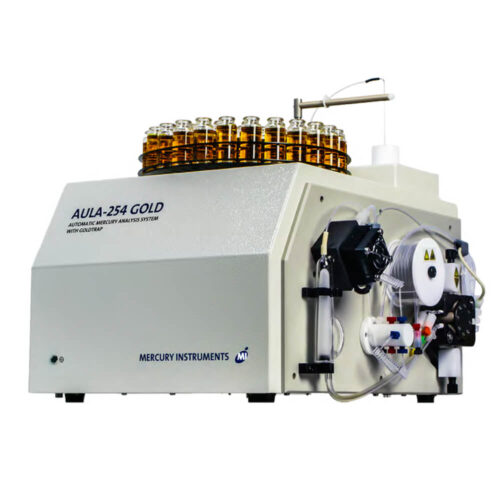 The AULA 254 is used for fully automatic determination of mercury traces in liquid samples and sample digests. The instrument carries out routine analysis: sample after sample following exactly the preselected procedure thus increasing efficiency and productivity of your lab. The working principle of the system is based on the continuous flow method. First the mercury contained in the sample is transformed into the elemental state by addition of a reducing agent to the sample flow. In a cross-flow reactor the mercury is stripped with a gas stream and carried into the optical cell which is made entirely of fused silica. There the quantitative determination of mercury is obtained by measuring UV absorption at a wavelength of 253,7 nm at room temperature. This analytical technique is commonly known as cold vapor atomic absorption spectrometry (CVAAS), a method that has proved itself as extremely sensitive and selective over many years. No long purging or rinsing procedures even when samples with high concentrations are analyzed. The typical duration of a full measurement cycle is 80 … 280 seconds. The quick screening mode allows performing analyses in even a shorter time.
The AULA 254 is used for fully automatic determination of mercury traces in liquid samples and sample digests. The instrument carries out routine analysis: sample after sample following exactly the preselected procedure thus increasing efficiency and productivity of your lab. The working principle of the system is based on the continuous flow method. First the mercury contained in the sample is transformed into the elemental state by addition of a reducing agent to the sample flow. In a cross-flow reactor the mercury is stripped with a gas stream and carried into the optical cell which is made entirely of fused silica. There the quantitative determination of mercury is obtained by measuring UV absorption at a wavelength of 253,7 nm at room temperature. This analytical technique is commonly known as cold vapor atomic absorption spectrometry (CVAAS), a method that has proved itself as extremely sensitive and selective over many years. No long purging or rinsing procedures even when samples with high concentrations are analyzed. The typical duration of a full measurement cycle is 80 … 280 seconds. The quick screening mode allows performing analyses in even a shorter time. -

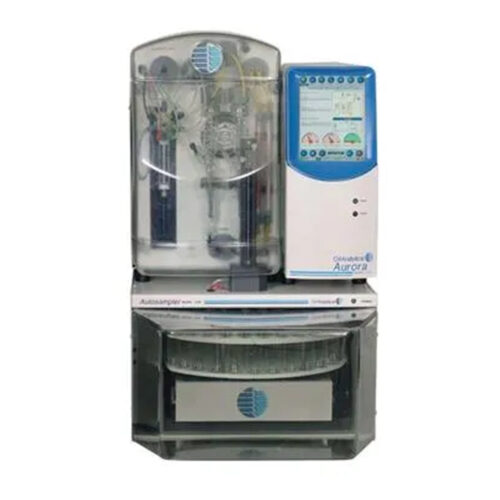 The Aurora 1030 line of TOC analyzers from OI Analytical includes instrument configurations for laboratory and process monitoring, employing 100 °C persulfate wet oxidation or thermal combustion techniques. The Aurora 1030 line incorporates several noteworthy innovations and can be equipped with parallel reactors allowing concurrent sample processing for increased analytical throughput. The unique 1030D Dual Mode TOC analyzer allows sample processing by wet oxidation or thermal combustion using the same instrument.
The Aurora 1030 line of TOC analyzers from OI Analytical includes instrument configurations for laboratory and process monitoring, employing 100 °C persulfate wet oxidation or thermal combustion techniques. The Aurora 1030 line incorporates several noteworthy innovations and can be equipped with parallel reactors allowing concurrent sample processing for increased analytical throughput. The unique 1030D Dual Mode TOC analyzer allows sample processing by wet oxidation or thermal combustion using the same instrument. -

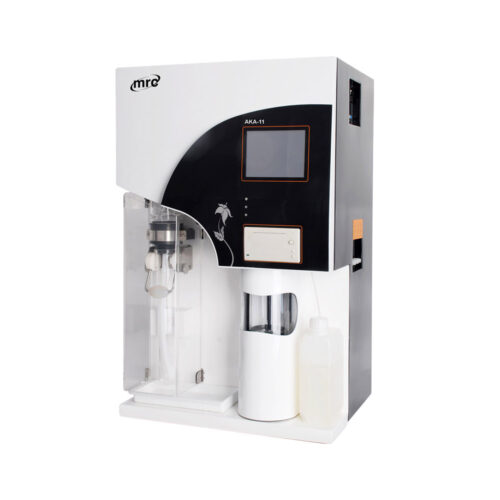
De Kjeldahl-methode is een methode geschikt om de fractie organische stikstof in samples te bepalen. De methode zal de hoeveelheid stikstof en ammoniak die in organische verbindingen vervat zit analyseren, enkel stikstof in de vorm van nitraten en nitrieten verbindingen worden genegeerd.
Deze erg oude methode is nog steeds de meest “populaire” (lees erkende) methode voor het bepalen van Stikstof in waters en voedsel samples.
Omwille van de chemicaliën en de hogere temperaturen die zich in het Kjeldahl proces voordoen is Kjeldahl lang een ongewenste gast op het labo geweest daar de nodige voorzichtigheid aangewezen is.
Vandaag zijn deze analyses bijna volledig geautomatiseerd, beveiligd en gecontroleerd zodat het gebruik van deze analyzers haast kinderspel geworden is.
-
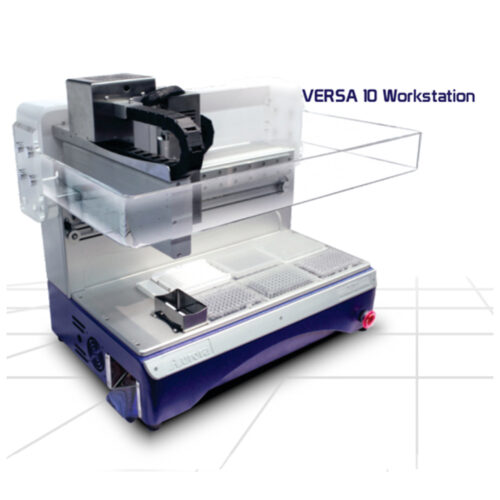
Het VERSA 10 werkstation is een compacte, kost effectieve, high throughput, automatische air-displacement vloeistof sampler.
Het systeem bied een oplossing voor de nood aan hoge doorvoer vloeistof behandelings mogelijkheden van een klein benchtop model tot een uitgebreid vloer model. Door het combineren van een 4 of 8 kanaals kop maar wel met single kanaals functionaliteit kan dit workstation de routine protocollen automatiseren met een variabele hoeveelheid aan samples. Het compacte 6positie werkplatform zorgt ervoor dat u de pipetteer protocollen kunt uitvoeren in een bio-afzuigkap of plekken met beperkte ruimte.
Dit systeem ondersteund verschillende eigen reagentia en labware door zijn open systeem en dit aan een zeer aantrekkelijke prijs.
-
 The all new Chip-DSC 1 integrates all essential parts of DSC: furnace, sensor and electronics in a miniaturized housing. The chip-arrangement comprises the heater and temperature sensor in a chemically inert ceramic arrangement with metallic heater and temperature sensor. This arrangement allows superior reproducibility and due to the low mass outstanding temperature control and heating rates of up to 100 K/min. The integrated sensor is easily user exchangeable and available for a low cost. The integrated design of the chip-sensor delivers superior raw data, which enables a direct analysis without pre- or post-processing of heat flow data. The compact construction, leads to a significant reduction in production cost which can be passed on to our customers. The low energy consumption and unrivaled dynamic response result in unsurpassed performance of this revolutionary DSC-concept.
The all new Chip-DSC 1 integrates all essential parts of DSC: furnace, sensor and electronics in a miniaturized housing. The chip-arrangement comprises the heater and temperature sensor in a chemically inert ceramic arrangement with metallic heater and temperature sensor. This arrangement allows superior reproducibility and due to the low mass outstanding temperature control and heating rates of up to 100 K/min. The integrated sensor is easily user exchangeable and available for a low cost. The integrated design of the chip-sensor delivers superior raw data, which enables a direct analysis without pre- or post-processing of heat flow data. The compact construction, leads to a significant reduction in production cost which can be passed on to our customers. The low energy consumption and unrivaled dynamic response result in unsurpassed performance of this revolutionary DSC-concept. -
 The all new Chip-DSC 10 integrates all essential parts of DSC: furnace, sensor and electronics in a miniaturized housing. The chip-arrangement comprises the heater and temperature sensor in a chemically inert ceramic arrangement with metallic heater and temperature sensor. This arrangement allows superior reproducibility and due to the low mass outstanding temperature control and heating rates of up to 300 K/min. The integrated sensor is easily user exchangeable and available for a low cost. https://www.youtube.com/watch?v=07XKWG_aEoc
The all new Chip-DSC 10 integrates all essential parts of DSC: furnace, sensor and electronics in a miniaturized housing. The chip-arrangement comprises the heater and temperature sensor in a chemically inert ceramic arrangement with metallic heater and temperature sensor. This arrangement allows superior reproducibility and due to the low mass outstanding temperature control and heating rates of up to 300 K/min. The integrated sensor is easily user exchangeable and available for a low cost. https://www.youtube.com/watch?v=07XKWG_aEoc -
 The Chip-DSC 100 combines the advantages of chip technology with the requirements of our previous DSC models. Various options such as a sample robot, UV attachment and Raman spectroscopy transform the Chip-DSC 100 into a highly versatile measuring instrument. The arrangement of the Chip-Sensor allows superior reproducibility and due to the low mass outstanding temperature control and heating rates of up to 1000 K/min. The integrated sensor is easily user exchangeable and available for a low cost. The integrated design of the chip-sensor delivers superior raw data, which enables a direct analysis without pre- or post-processing of heat flow data. Applications on the Chip-DSC 100 can be expanded with various accessories. You can use different cooling systems in combination with a sample robot. The sample robot is available with 96 positions.
The Chip-DSC 100 combines the advantages of chip technology with the requirements of our previous DSC models. Various options such as a sample robot, UV attachment and Raman spectroscopy transform the Chip-DSC 100 into a highly versatile measuring instrument. The arrangement of the Chip-Sensor allows superior reproducibility and due to the low mass outstanding temperature control and heating rates of up to 1000 K/min. The integrated sensor is easily user exchangeable and available for a low cost. The integrated design of the chip-sensor delivers superior raw data, which enables a direct analysis without pre- or post-processing of heat flow data. Applications on the Chip-DSC 100 can be expanded with various accessories. You can use different cooling systems in combination with a sample robot. The sample robot is available with 96 positions. -
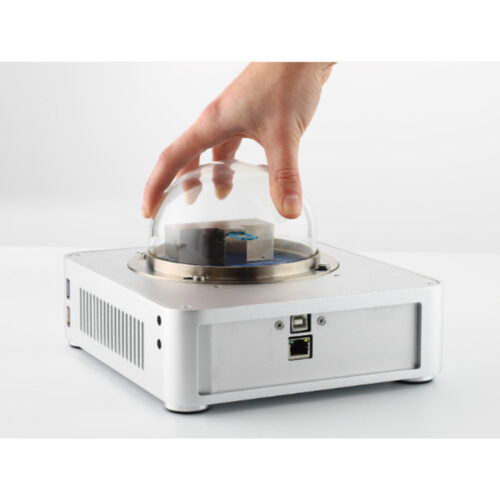
 The all new Chip DSC-sensor integrates all essential parts of DSC, furnace, sensor and electronics in a miniaturized housing. The chip-arrangement comprises the heater and temperature sensor in a chemically inert ceramic arrangement with metallic heater and temperature sensor. This arrangement allows superior reproducibility and due to the low mass outstanding temperature control and heating rates of up to 300°C/min. The integrated sensor is easily user exchangeable and available for a low cost. The integrated design of the chip-sensor delivers superior raw data, which enables a direct analysis without pre- or post-processing of heat flow data.
The all new Chip DSC-sensor integrates all essential parts of DSC, furnace, sensor and electronics in a miniaturized housing. The chip-arrangement comprises the heater and temperature sensor in a chemically inert ceramic arrangement with metallic heater and temperature sensor. This arrangement allows superior reproducibility and due to the low mass outstanding temperature control and heating rates of up to 300°C/min. The integrated sensor is easily user exchangeable and available for a low cost. The integrated design of the chip-sensor delivers superior raw data, which enables a direct analysis without pre- or post-processing of heat flow data. -
 The Differential Thermal Analysis DTA is the most common thermal analysis method due to its wide range of information provided. The Linseis high temperature DTA PT 1600 is designed to deliver highest calorimetric sensitivity, short time constants and a condensation free sample chamber. These features guarantee superior resolution and baseline stability over the entire instrument lifetime. Thus providing a indispensable tool for material development, R&D and quality control. All Linseis Differential Thermal Analyzers (DTA) comprise the advantages of latest technology, highest resolution and a robust easy to use instrument design.
The Differential Thermal Analysis DTA is the most common thermal analysis method due to its wide range of information provided. The Linseis high temperature DTA PT 1600 is designed to deliver highest calorimetric sensitivity, short time constants and a condensation free sample chamber. These features guarantee superior resolution and baseline stability over the entire instrument lifetime. Thus providing a indispensable tool for material development, R&D and quality control. All Linseis Differential Thermal Analyzers (DTA) comprise the advantages of latest technology, highest resolution and a robust easy to use instrument design. -

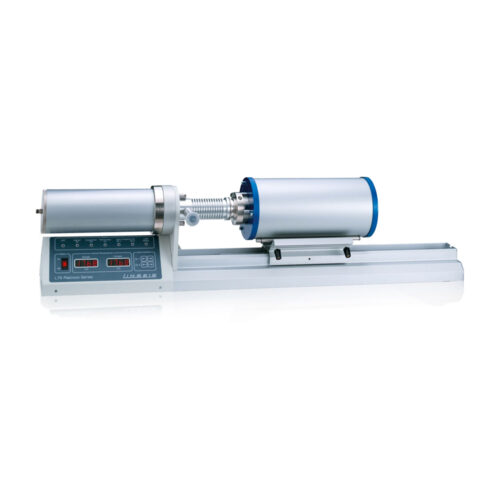 Dilatometry DIL is a technique in which a dimension of a substance under negligible load is measured (e.g. expansion measurement or shrinkage measurement) as a function of temperature while the substance is subjected to a controlled temperature program in a specified atmosphere. Linseis produces a wide range of Single-, Dual-, Differential-, Quattro-, Quenching-, Laser- and Optical Dilatometer in a temperature range from -180°C up to 2800°C and a resolution up to 0.3 nm. Thanks to our years of experience (est. 1953), Linseis offers Dilatometers with an unbeaten performance.
Dilatometry DIL is a technique in which a dimension of a substance under negligible load is measured (e.g. expansion measurement or shrinkage measurement) as a function of temperature while the substance is subjected to a controlled temperature program in a specified atmosphere. Linseis produces a wide range of Single-, Dual-, Differential-, Quattro-, Quenching-, Laser- and Optical Dilatometer in a temperature range from -180°C up to 2800°C and a resolution up to 0.3 nm. Thanks to our years of experience (est. 1953), Linseis offers Dilatometers with an unbeaten performance. -
 The Smartchem 600 combines the latest technology in discrete analysis with an innovative and unique design that guarantees accurate and reproducible results. The Smartchem range is the first discrete analyzers to utilize washable cuvettes with an integrated wash and control station, which guarantee a lower running cost and reduced risk of contamination. In addition to automated analysis the Smartchem 600 offers automated system Quality Control. The Smartchem range is also the first discrete analyzers to utilize a patented, dedicated sample prep module for the determination of NOx by Cadmium reduction. Designed for multi-tasking and high throughput rates, the NOx module also provides automated cadmium regeneration. The instrument provides also a pH, Conductivity and Redox module. Fully automated, the Smartchem 600 is available with new user-friendly software designed for touch screen computer with the possibility of wireless control. Ease of use combined with minimal operating condition requirements make the Smartchem 600 the right choice for every cost-efficiency laboratory.
The Smartchem 600 combines the latest technology in discrete analysis with an innovative and unique design that guarantees accurate and reproducible results. The Smartchem range is the first discrete analyzers to utilize washable cuvettes with an integrated wash and control station, which guarantee a lower running cost and reduced risk of contamination. In addition to automated analysis the Smartchem 600 offers automated system Quality Control. The Smartchem range is also the first discrete analyzers to utilize a patented, dedicated sample prep module for the determination of NOx by Cadmium reduction. Designed for multi-tasking and high throughput rates, the NOx module also provides automated cadmium regeneration. The instrument provides also a pH, Conductivity and Redox module. Fully automated, the Smartchem 600 is available with new user-friendly software designed for touch screen computer with the possibility of wireless control. Ease of use combined with minimal operating condition requirements make the Smartchem 600 the right choice for every cost-efficiency laboratory. -
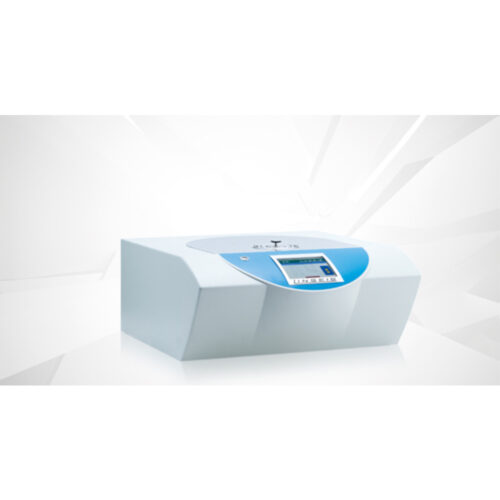 The DSC PT 1000 was developed to provide a general purpose TM – DSC with a broad temperature range (-180 – 600°C) for all common applications. Furthermore emphasis was placed on an extremely stable baseline and high reproducibility. The design allows manual and automatic operation. The conception of the cell guarantees maximum mechanical and chemical resistance. The key part of every DSC is the sensor, so don’t make any compromise. Up to now it has been impossible to achieve highest resolution and sensitivity in one sensor. The revolutionary design of the HiperRes® Sensor line now enables just that. The Ceramic/Metal Sensor deliver outstanding resolution in combination with superior reproducibility.
The DSC PT 1000 was developed to provide a general purpose TM – DSC with a broad temperature range (-180 – 600°C) for all common applications. Furthermore emphasis was placed on an extremely stable baseline and high reproducibility. The design allows manual and automatic operation. The conception of the cell guarantees maximum mechanical and chemical resistance. The key part of every DSC is the sensor, so don’t make any compromise. Up to now it has been impossible to achieve highest resolution and sensitivity in one sensor. The revolutionary design of the HiperRes® Sensor line now enables just that. The Ceramic/Metal Sensor deliver outstanding resolution in combination with superior reproducibility.
